[About stock]
Since we share inventory between our stores and our online store, it may happen that an item is out of stock after you place your order. In that case, we will contact you as soon as possible. Thank you for your understanding.
Spec
Material: 100% wool (merino wool)
Heather Charcoal = 145g/㎡
Others = 156g/㎡
Sizes: S, M, L, XL (Men) S, M, L (Women)
Weight: Men/M approx. 128g (Heather Charcoal) *There may be slight differences depending on the color.
Country of origin: Japan Producer: Tokyo Pio Aomori Factory Co., Ltd., Tsugaru City, Aomori Prefecture

Material
This product is made from 100% New Zealand merino wool jersey.
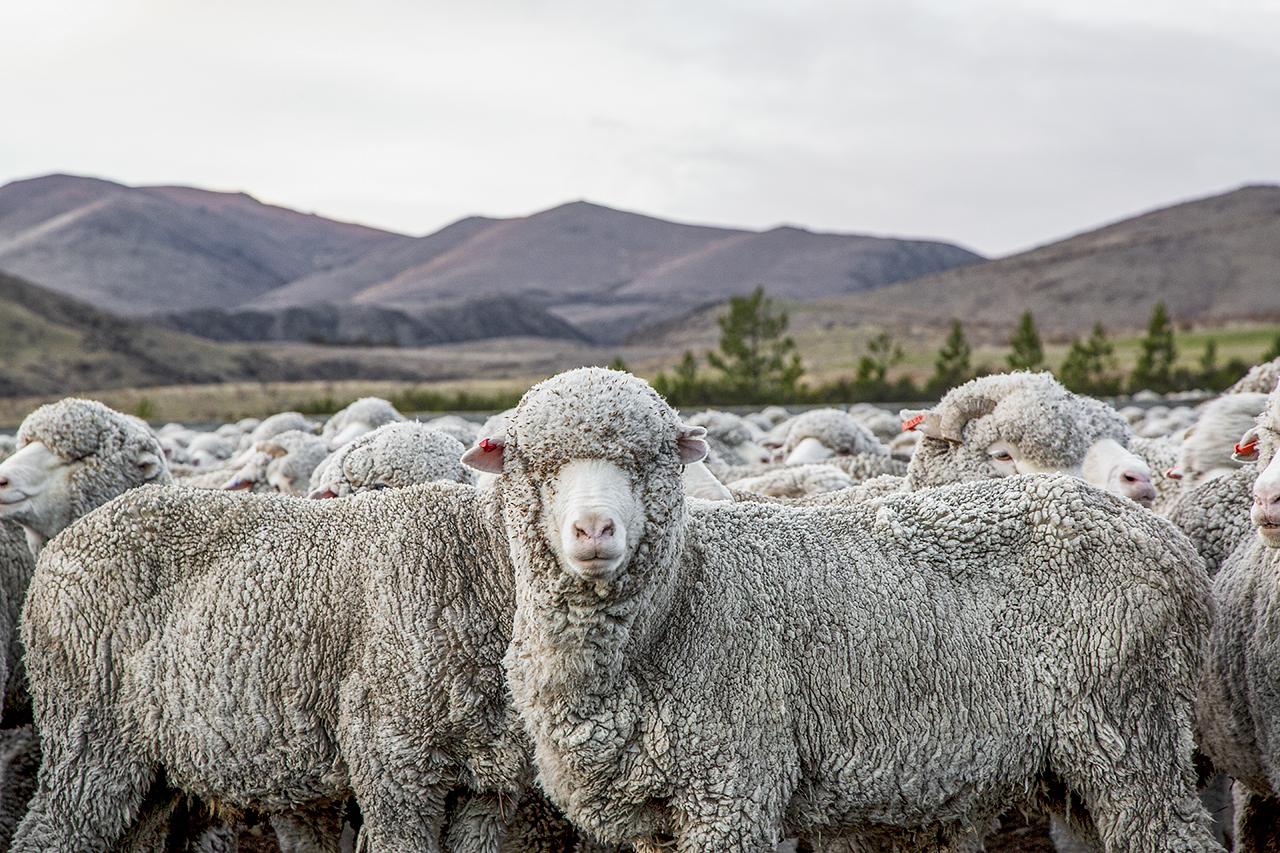
The main characteristics of merino wool material include high thermal insulation, good breathability, moisture control, high odor resistance (antibacterial properties), heat resistance, and UV protection.
REDA, the company that produces the merino wool jersey used by RIDGE MOUNTAIN GEAR, is a long-established wool fabric manufacturer founded in Italy over 150 years ago.
The sheep are raised in a relaxed environment on REDA's vast farm in New Zealand.
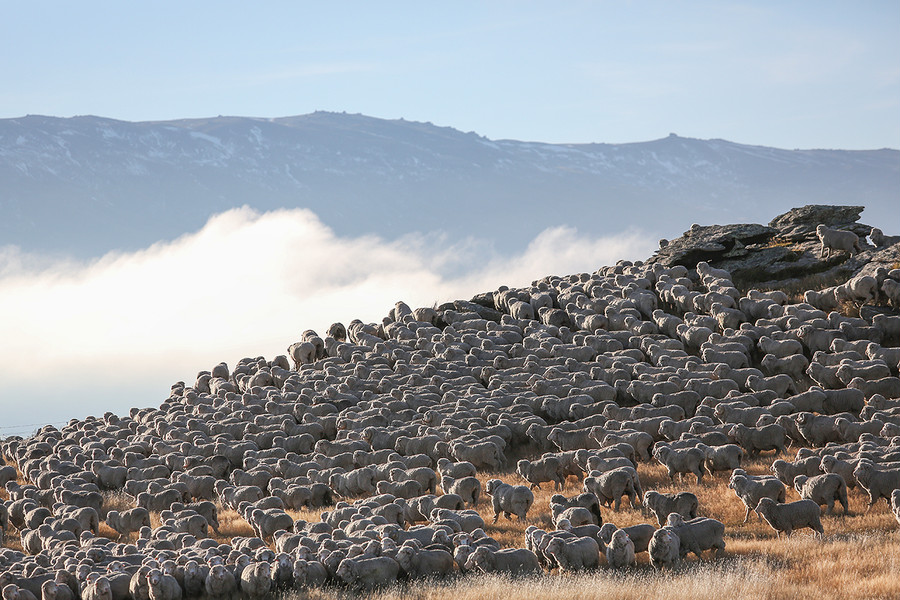

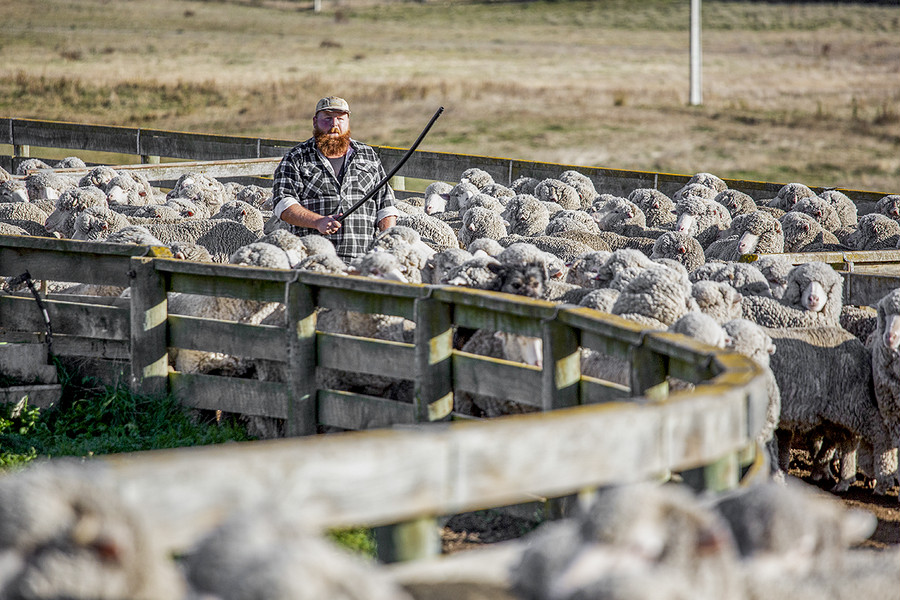
The raw wool from these sheep is carefully knitted into yarn, and the yarn into fabric, at our own factory in Italy.
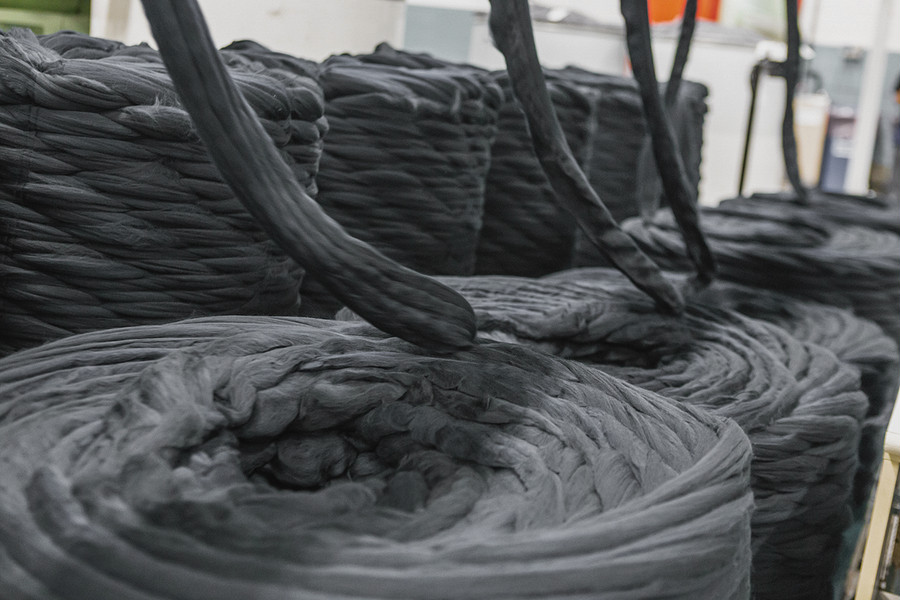
Merino wool is a natural fiber and even if it has been treated to prevent shrinkage, some shrinkage will still occur.
This is something that can't be helped, and I'm sure some of you have had the experience of buying a T-shirt or sweatshirt made from cotton, a natural fiber, and having it shrink by more than one size after washing.
Since it is a natural fiber, it is inevitable that the fabric will shrink when washed, but when making this T-shirt, we wanted to use a material that would minimize that shrinkage as much as possible.
Before arriving at the merino wool jersey fabric we are using in this product, we made prototype T-shirts using merino wool jersey fabric from three different manufacturers.

All of these materials were said to be "washable wool," but when I actually made samples and wore and washed them repeatedly, all of them shrunk or distorted significantly by one size or more, and I was not satisfied with the materials.
To compensate for the weaknesses of wool products, such as shrinkage and low durability, there are merino wool products that are mixed with synthetic fibers such as nylon and polyester. It is true that they shrink less when washed, and there are plenty of benefits to mixing synthetic fibers in terms of everyday ease of handling.
However, I had been wearing a nylon-mixed merino wool T-shirt for a long time, and the nylon started to deteriorate over time, making it uncomfortable to wear until the very end. I also feel that 100% merino wool products cannot compete with the odor resistance and heat retention. More than anything, I really like the "atmosphere" of 100% merino wool. This is not to say that I am against synthetic-mixed merino wool fabrics.
This product uses "REDA ACTIVE," a high-performance material that utilizes REDA's 150 years of experience, knowledge, and technology in addition to the inherent high functionality of wool (warmth, breathability, heat resistance, antibacterial properties, UV protection). I created a sample and wore and washed it repeatedly for about half a year, and it was the most comfortable fabric I had tried.
Features
1. Less fuzz and a soft texture
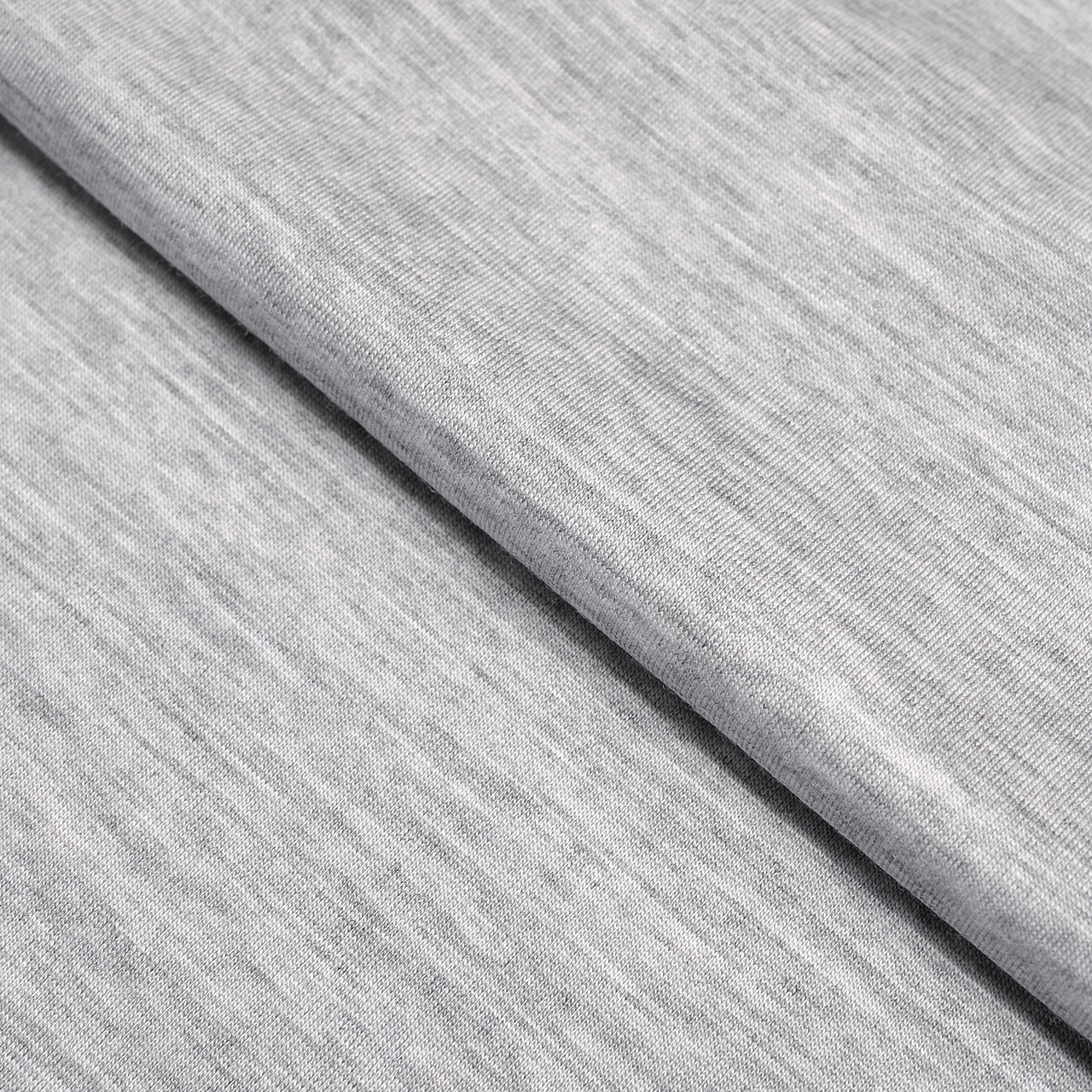
Merino wool is classified into various grades depending on the fineness (fineness) of the fibres in the yarn that makes up the fabric, and this fineness is expressed in µm (micrometres).
For the Merino Basic Tee, we used a very delicate 17.5μm (micrometer) yarn called "Super 120's", which gives it a soft texture with very little of the prickly feeling that is typical of wool.
2. Made with New Zealand Merino
The use of New Zealand Merino wool is proof that the wool is "non-mulesing wool." "Mulesing" refers to the process of removing the skin and flesh from the buttocks of lambs to prevent them from becoming infested with maggots.
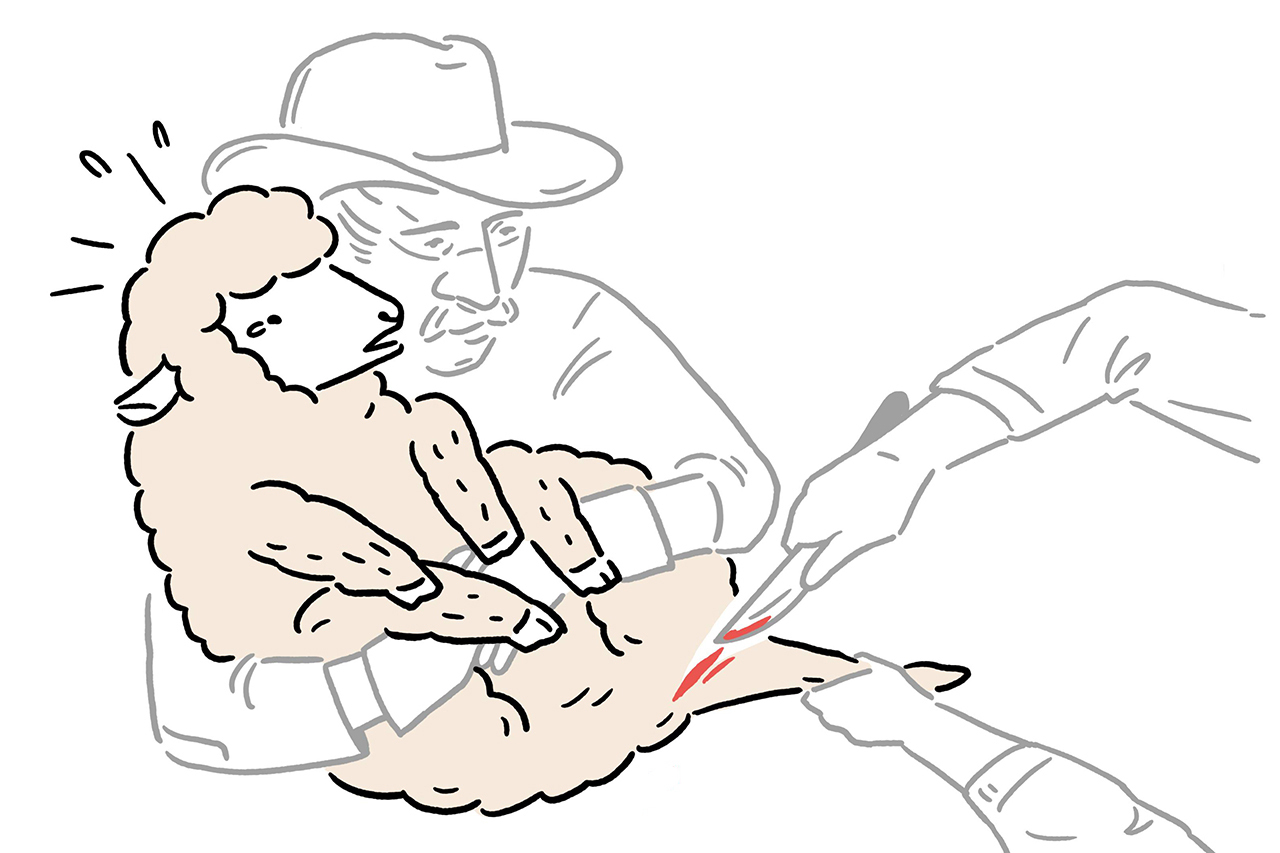
Merino sheep, which have been bred to produce as much wool as possible, have a large skin surface area and deep wrinkles on their skin, which means that urine and feces tend to accumulate in the wrinkles around their buttocks and genitals, making it easy for maggots to breed. In the worst case scenario, the maggots can eat the skin and flesh, leading to death.
One way to prevent this is "mulesing," but this is done without anesthesia and the scars may not be treated.
In New Zealand, such cruel mulesing has been banned since October 2018. Using New Zealand Merino also means using wool materials that are friendly to animals.
3.100% merino wool yet washable.
The fabric has been treated with several shrink-proofing processes to minimize shrinkage after washing.
However, since it is a natural fiber, some shrinkage and warping will occur. Please refer to the care method below to ensure that you can use the product for a longer period of time.
・When washing, use detergent for wool.
・Turn the product inside out, place it in a laundry net and wash it alone.
- Water temperature should be limited to 40°C. Avoid washing with hot water.
- Avoid strong water flows when washing, and wash by hand or, if using a washing machine, use the "dry cycle" or "gentle water cycle".
- Never tumble dry.
・After dehydration, we recommend shaping the product and drying it in the shade.
-If you will not be wearing the item for a long period of time, make sure to remove any dirt and store it with an insect repellent.
Regarding skewing after washing
We have mentioned above the advantages of the merino wool jersey used in the Merino Basic Tee, but it also has disadvantages. One of them is the "skew".
The fabric used for this product is a 60 count single yarn. Fluffy wool is twisted into yarn, which is then knitted into fabric.
When washed, the fibers of the twisted yarn swell and tend to return to the opposite direction of the twist, which causes some twisting. As a result, the side and sleeve lines, which were straight before washing, may twist back and forth. This is called "skewing."
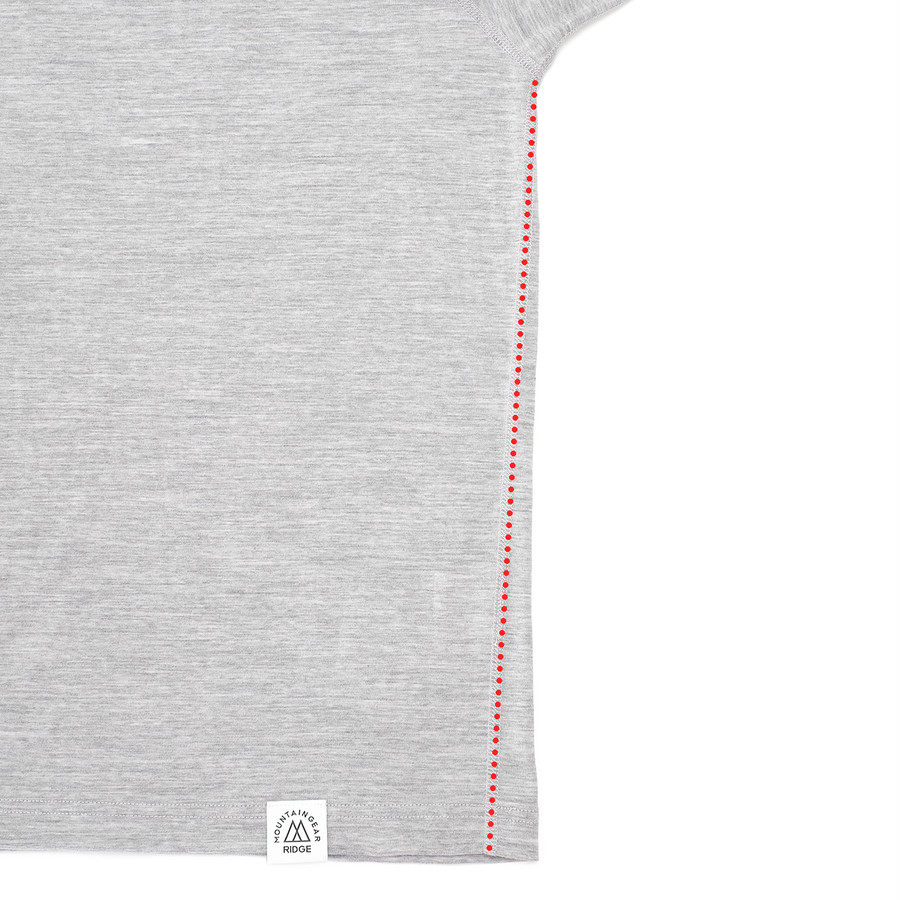
The image above shows the side of the product after washing and drying. Before washing, the side seam was straight, but after washing, it was slightly tilted forward as shown by the red dotted line.
Since the garment is made from single yarns made from natural fibers, this skewing is unavoidable, but it can be minimized by straightening the garment as much as possible to its original shape after washing and spin-drying before hanging it to dry.

Due to this skewing, the folded and sewn areas of the collar, cuffs and hem may become distorted as shown by the red lines in the image after washing and drying.

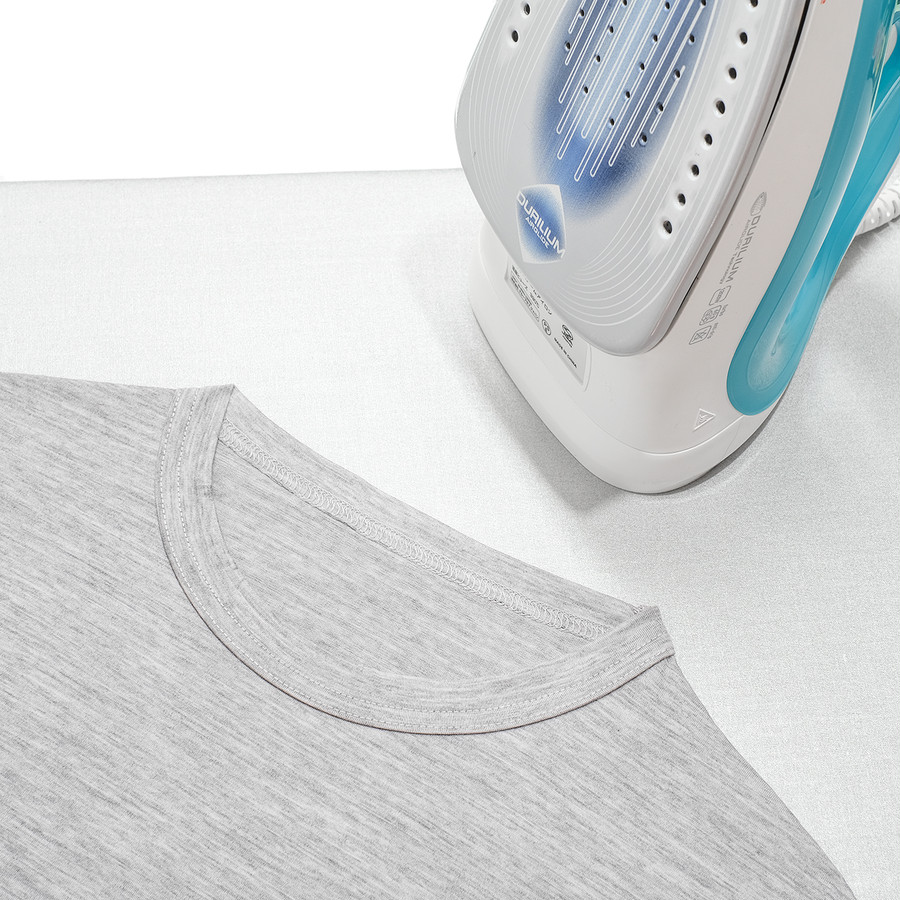
If you are concerned about it, you can easily restore it to its original condition by gently pressing it with a steam iron at a maximum temperature of 150℃ (medium temperature).
* Always use an ironing board when ironing.
Unevenness of fabric when retaining water
When fabric becomes moistened with water or sweat, the surface of the fabric will become uneven, with areas that have retained moisture and areas that do not.
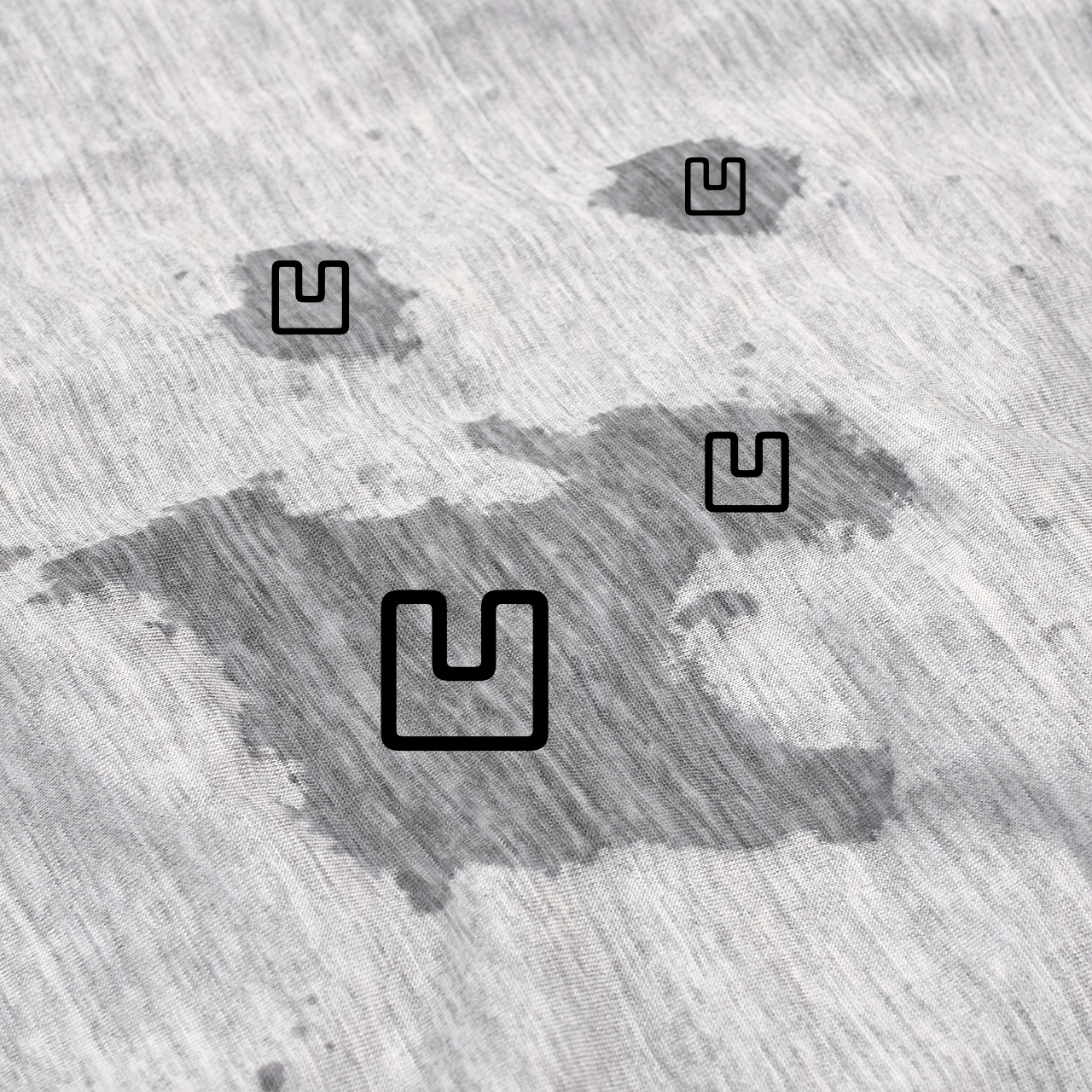
As shown in the image above as "concave," the areas that retain moisture will temporarily shrink slightly and appear sunken, but will return to their original shape once they dry.
Introduction
My encounter with Merino wool.
I really wanted to make a 100% merino wool T-shirt.
Nowadays, merino wool is not only used in outdoor products but also in everyday clothing, but I first discovered the benefits of merino wool products when I went on a seven-day traverse of the Northern Alps at the end of summer in 2015.
For the hike I brought a 100% polyester T-shirt with a special anti-odor treatment and a merino wool T-shirt, and I wore them in turn each day, but the 100% merino wool T-shirt was by far the most comfortable.

The best thing about merino wool is its odor-resistant power and high heat retention. 100% polyester T-shirts started to smell bad after about the second day, and I would get cold from sweat when I was stationary, but with merino wool T-shirts I hardly felt that way. From then on, I made sure to wear merino wool T-shirts whenever I went out to the mountains for multiple nights.

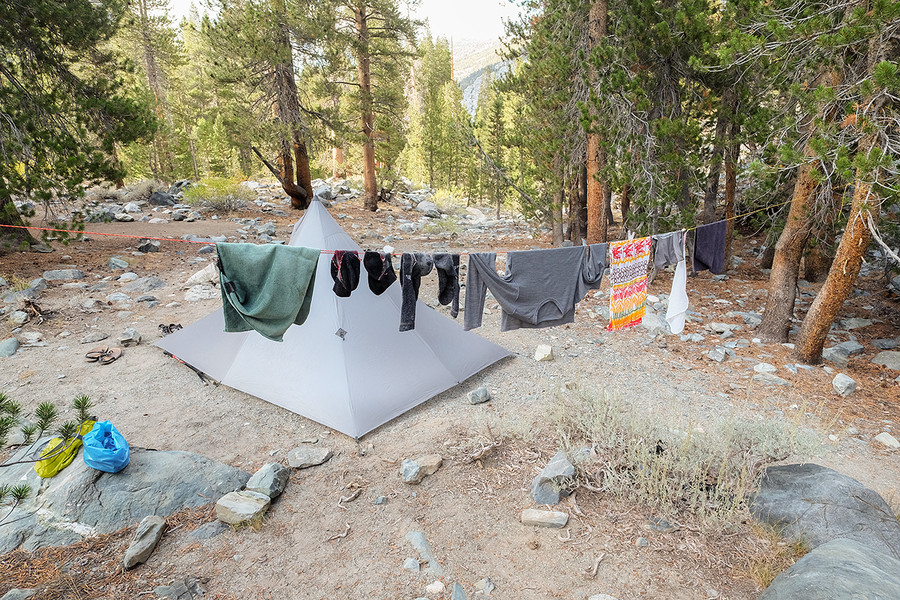
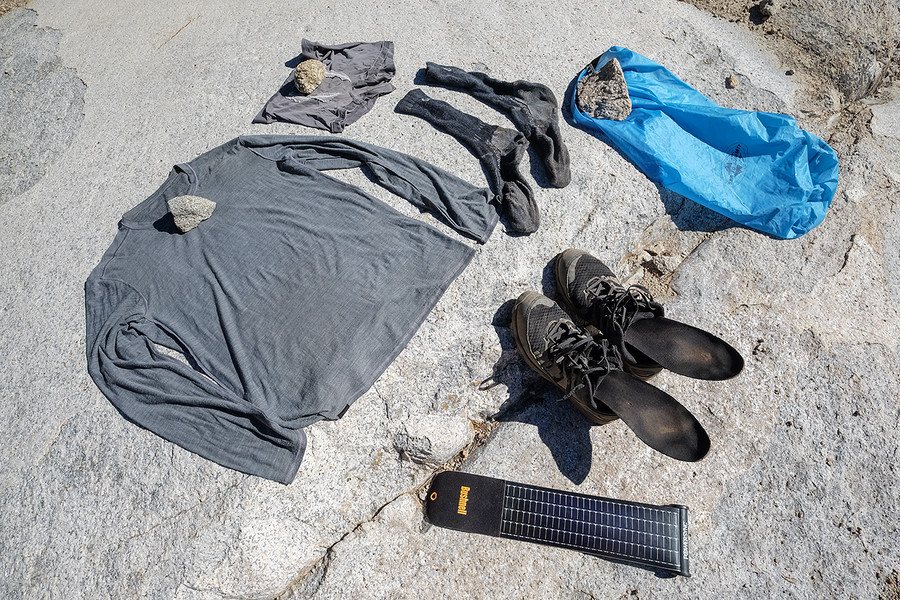
I brought merino wool with me when I walked the John Muir Trail for 14 days, about 340 km, in the fall of 2017. I rotated between two layers, sometimes washing them in the river, and remember being comfortable throughout the whole trip.
In particular, the feeling of freshness and security when changing into my merino wool base layer as sleeping clothes after a day of walking and setting up the tent was exceptional.
Design
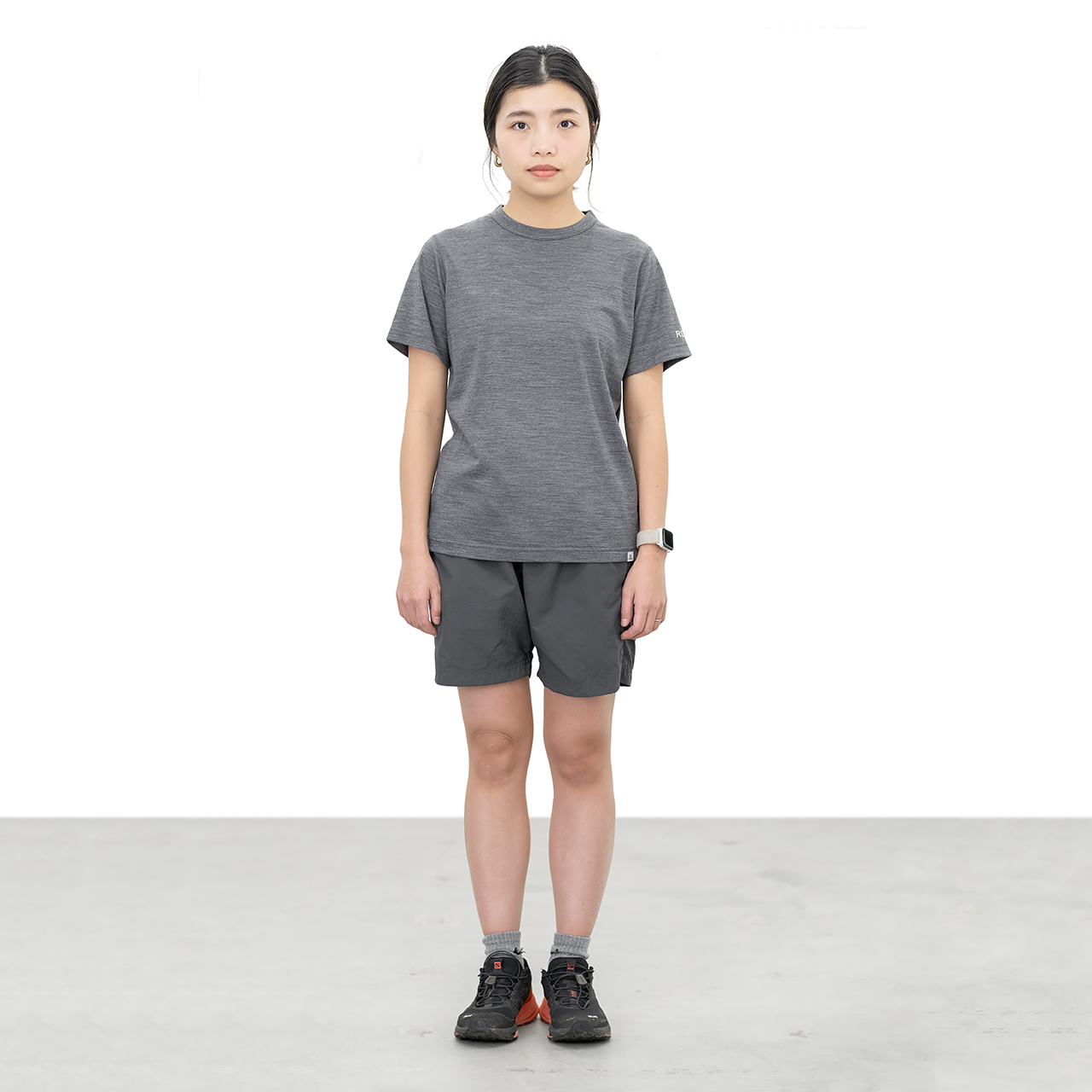
As the product name "Basic" suggests, it has a simple box-shaped design and can be worn from the mountains to the city.
The neckline is finished with a durable binder made of the same fabric to prevent the collar from stretching.

Another feature is that the shoulder seams, sleeve seams, and side seams are all flat seamed.

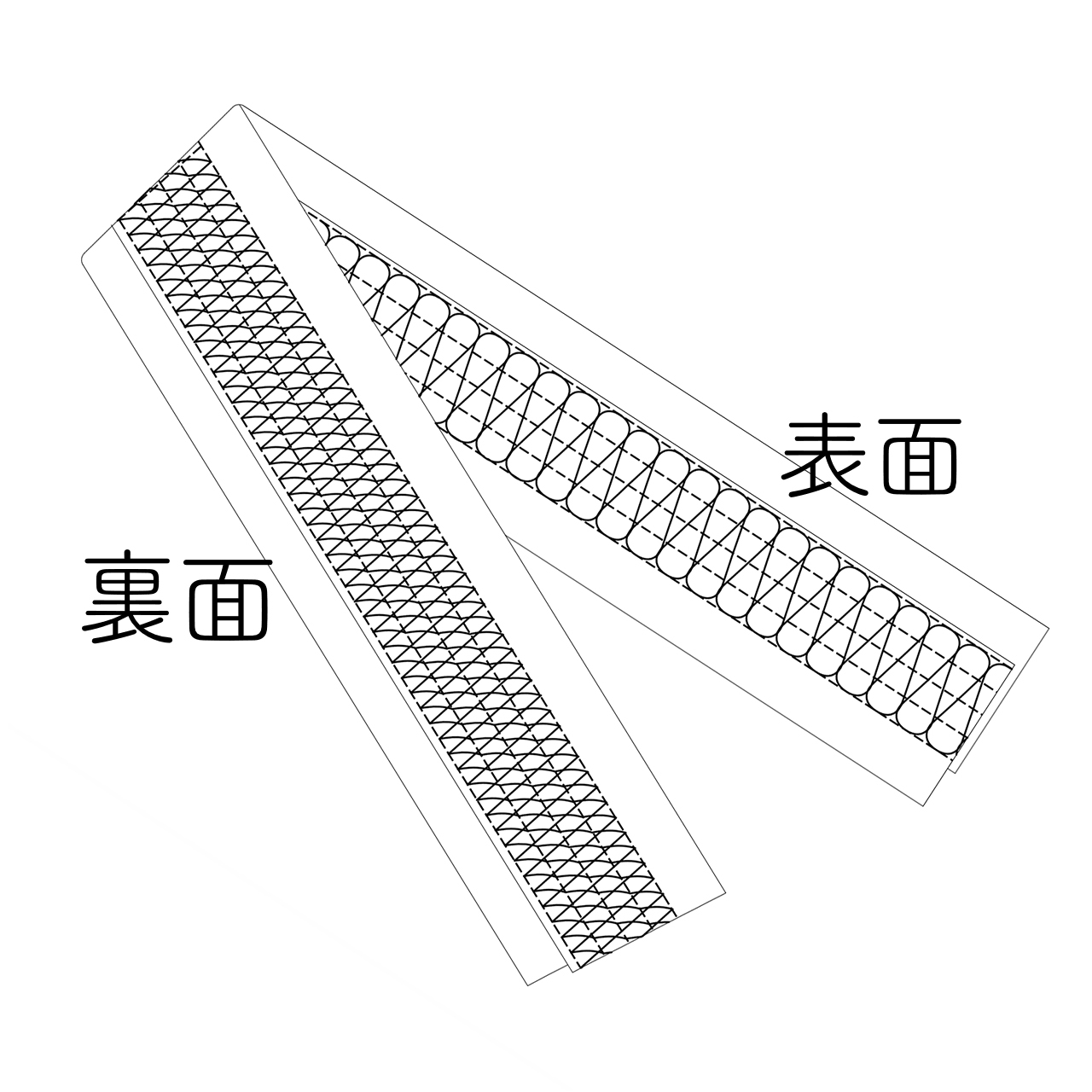
A "flat seam" is a method of sewing fabric together using a special sewing machine, as shown in the illustration above.
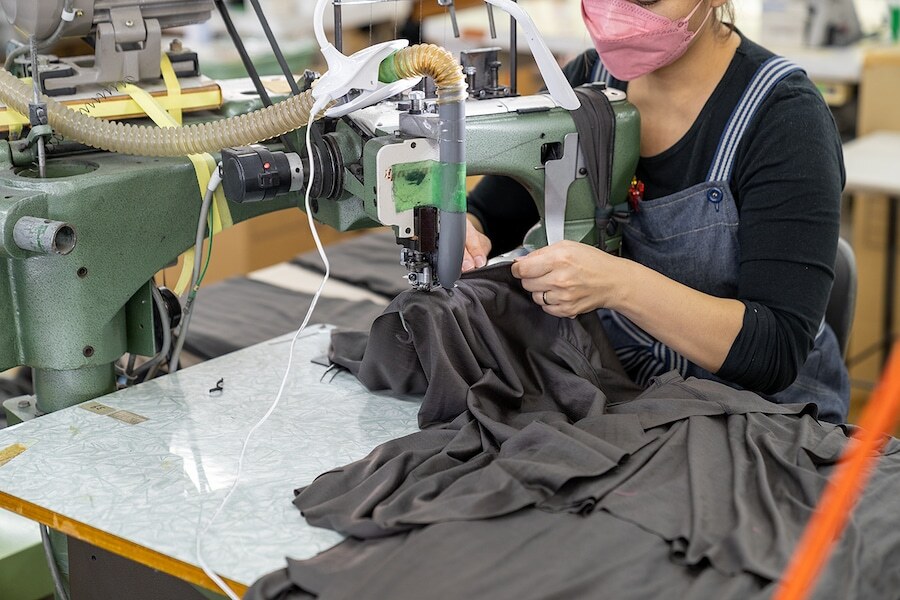
This is an image of the Merino Basic Tee being sewn using a flat seam machine at the factory where it is made.
As the name suggests, the seams of the fabric are finished very flat, minimizing stress on the skin. This manufacturing method is often used for sportswear and babywear because it produces strong seams.
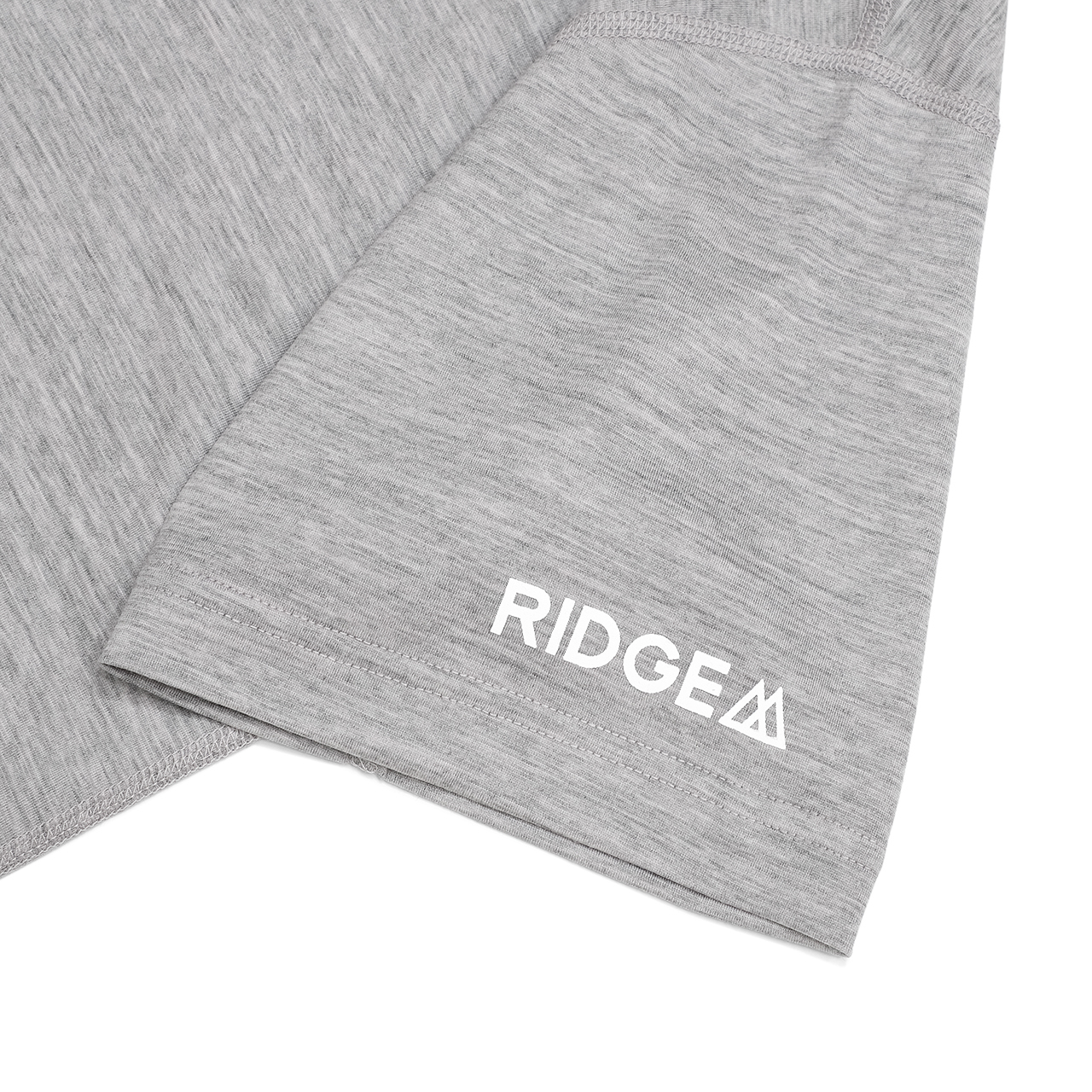
The logo is printed on the left sleeve cuff.

A brand name tag is sewn onto the hem. RIDGE MOUNTAIN GEAR merino wool products use white name tags. (The name design has changed from the 2022 sales.)
Color

Heather Charcoal
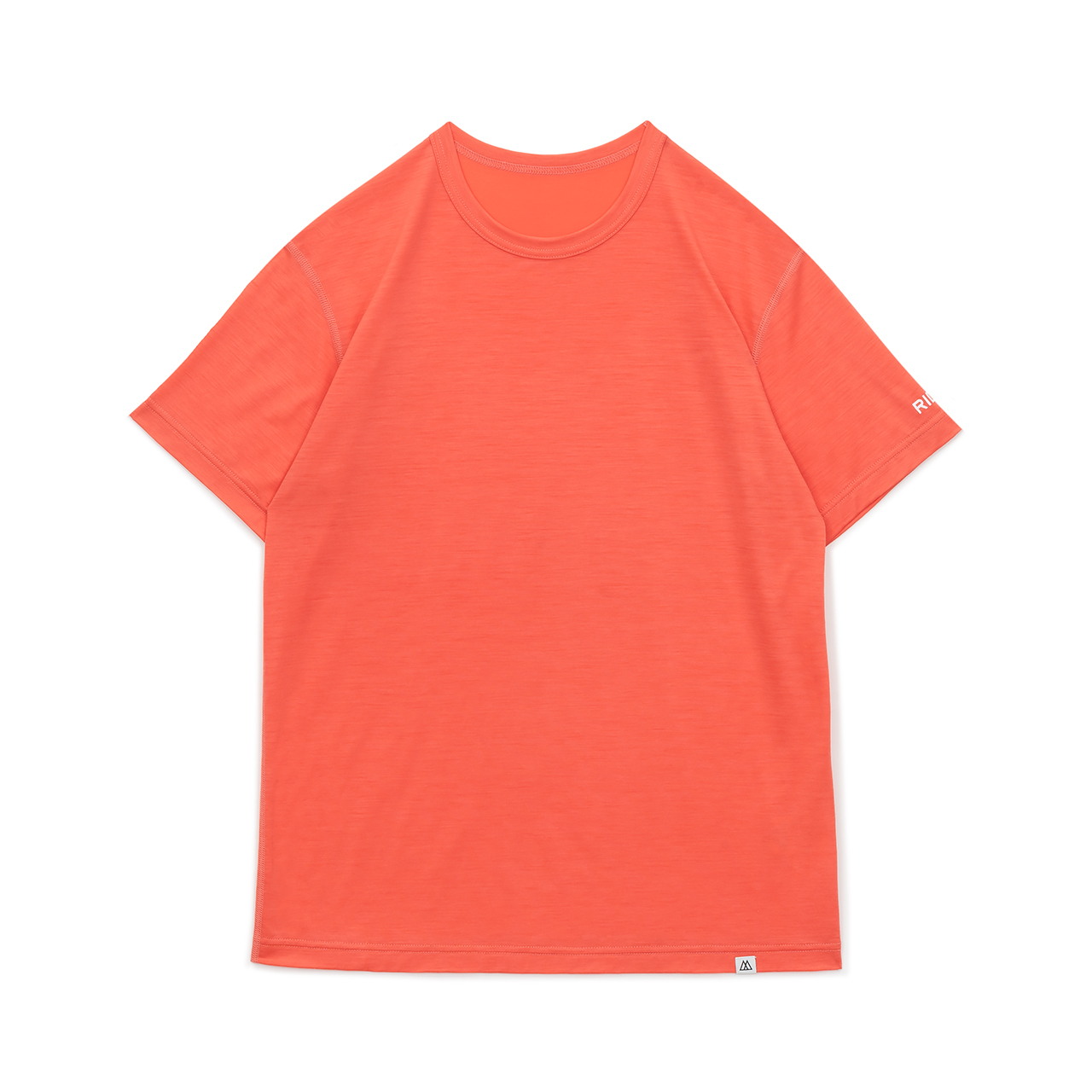
Coral Red
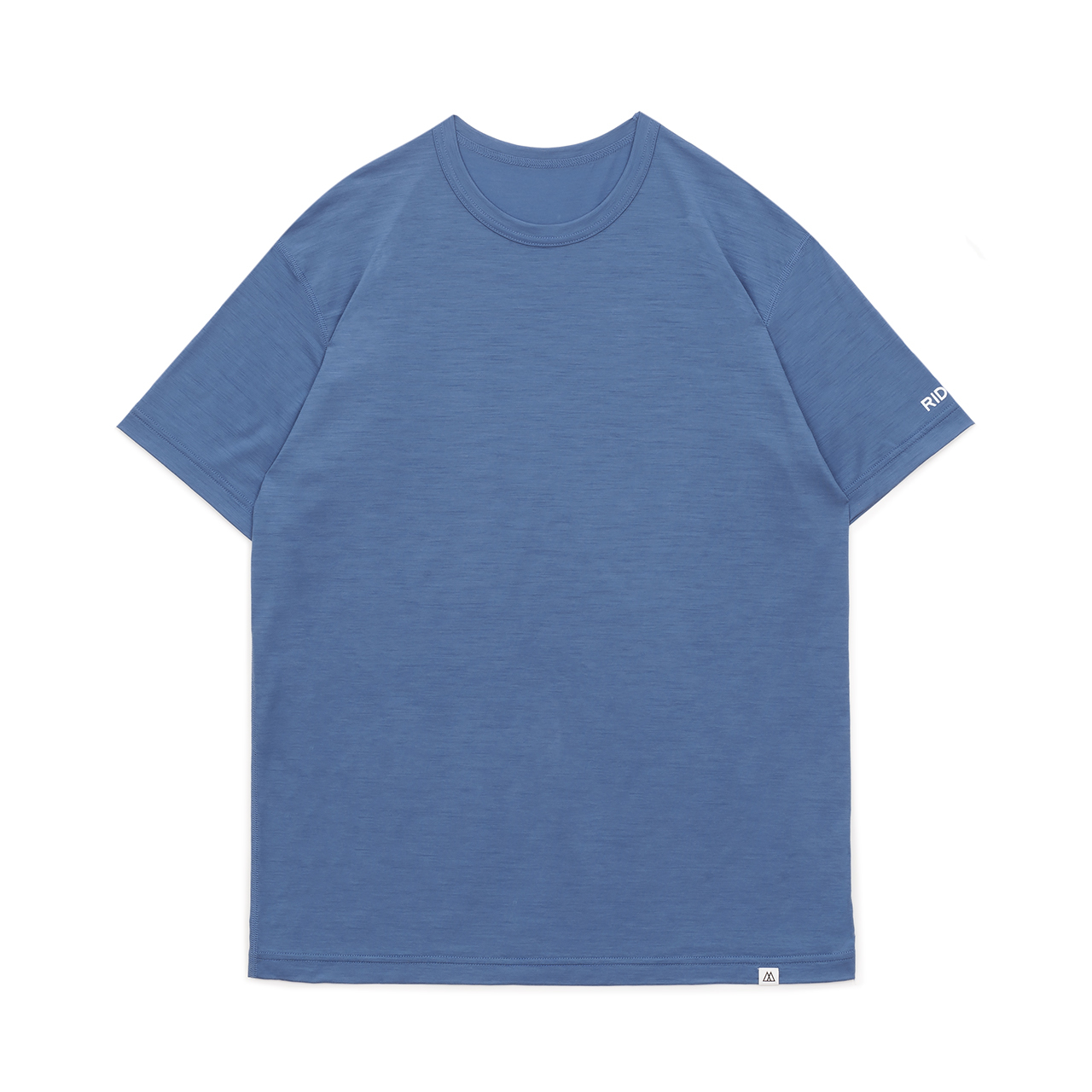
Azure Blue

White Cream

Moss Grey
Size Chart
Please note that this product is available in both men's and women's sizes.
There is not much difference in the overall silhouette between the men's and women's sizes, but the women's sizes have a silhouette that is more suited to the female body type, such as the length and shoulder width.
Please refer to the size chart below for details.


The above numbers are in cm.
*Please note that there may be slight differences in measurements depending on the location of the measurement.
*Please note that the product may shrink slightly after washing.
Size Guide [Men]


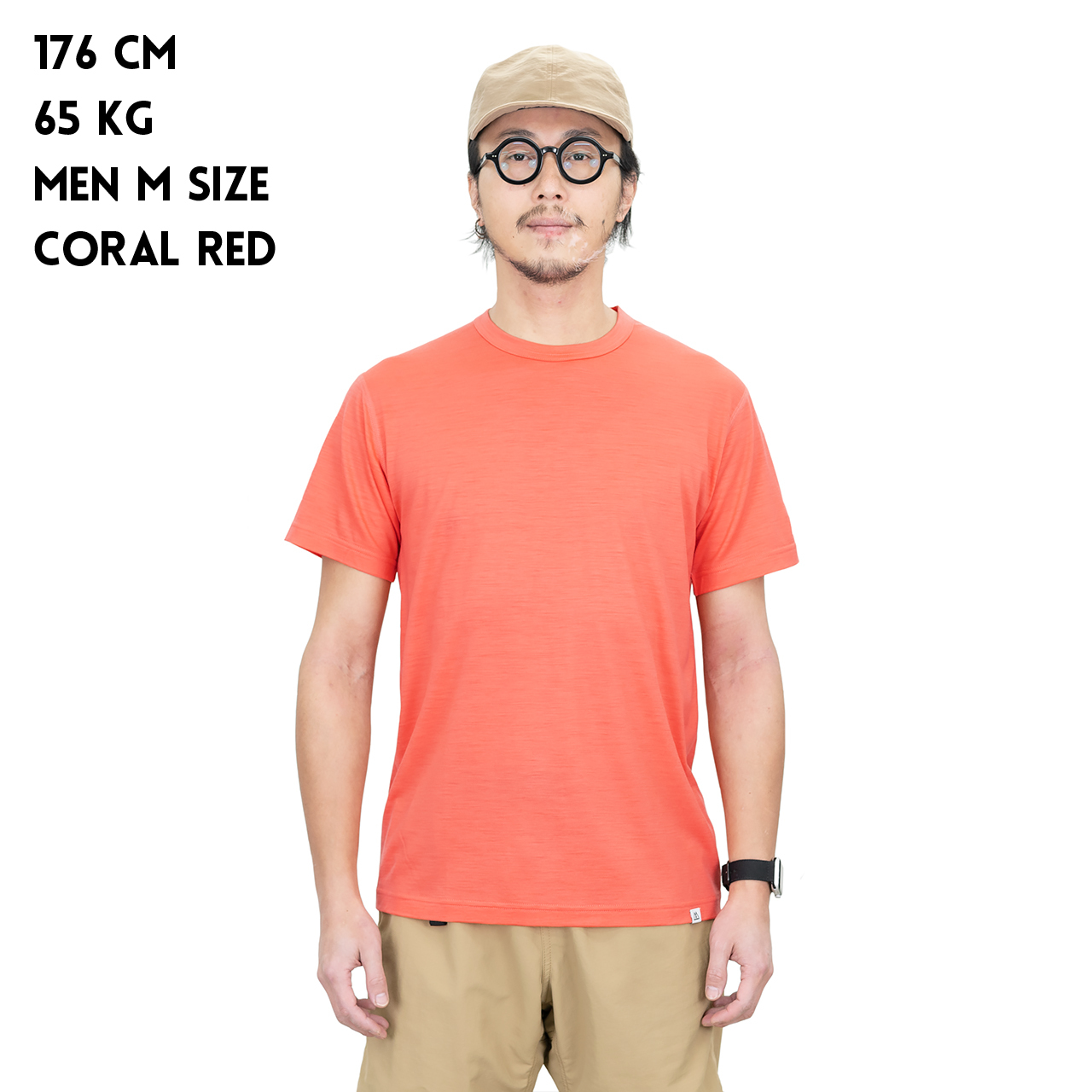
Size Guide [Women]
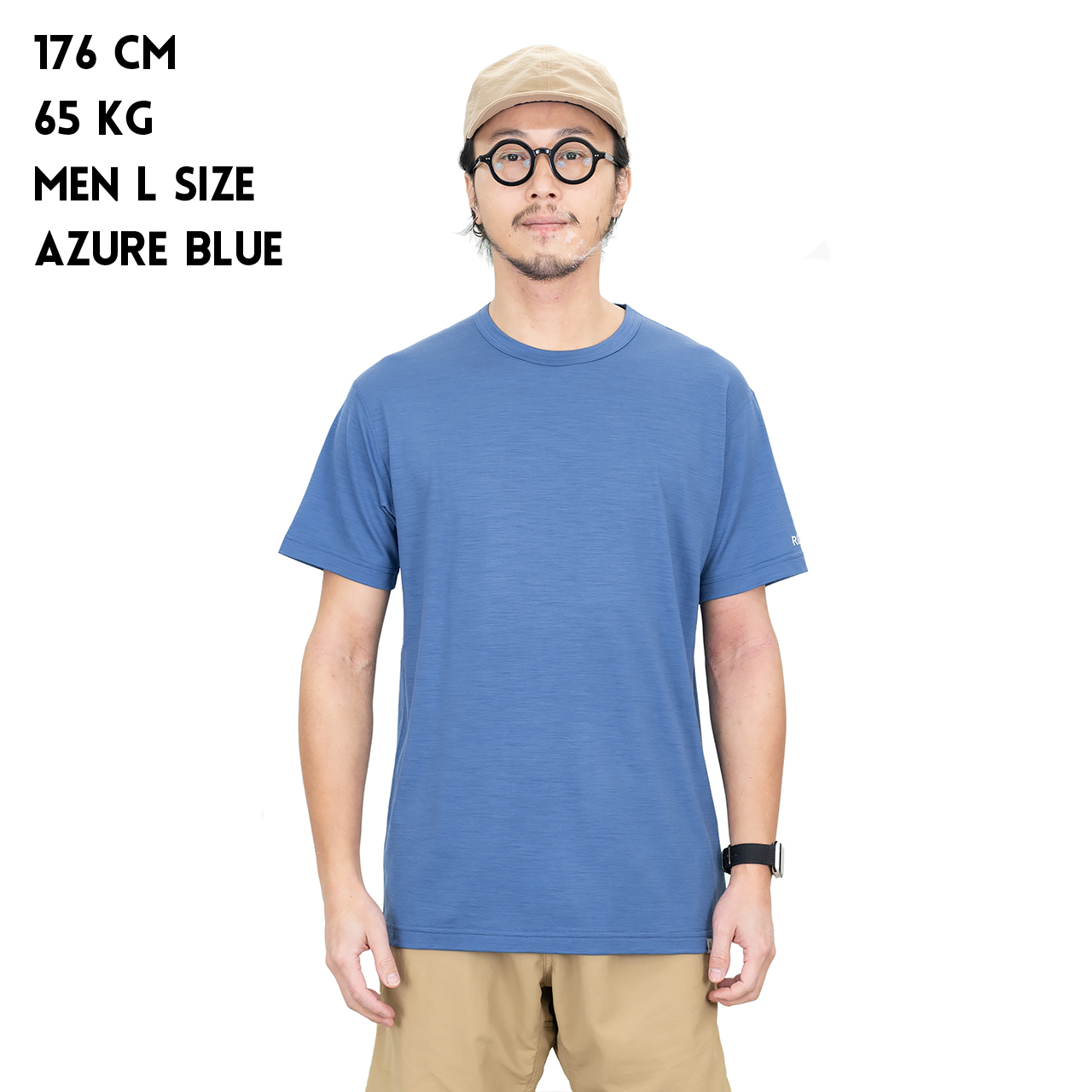


Size Guide [Women]

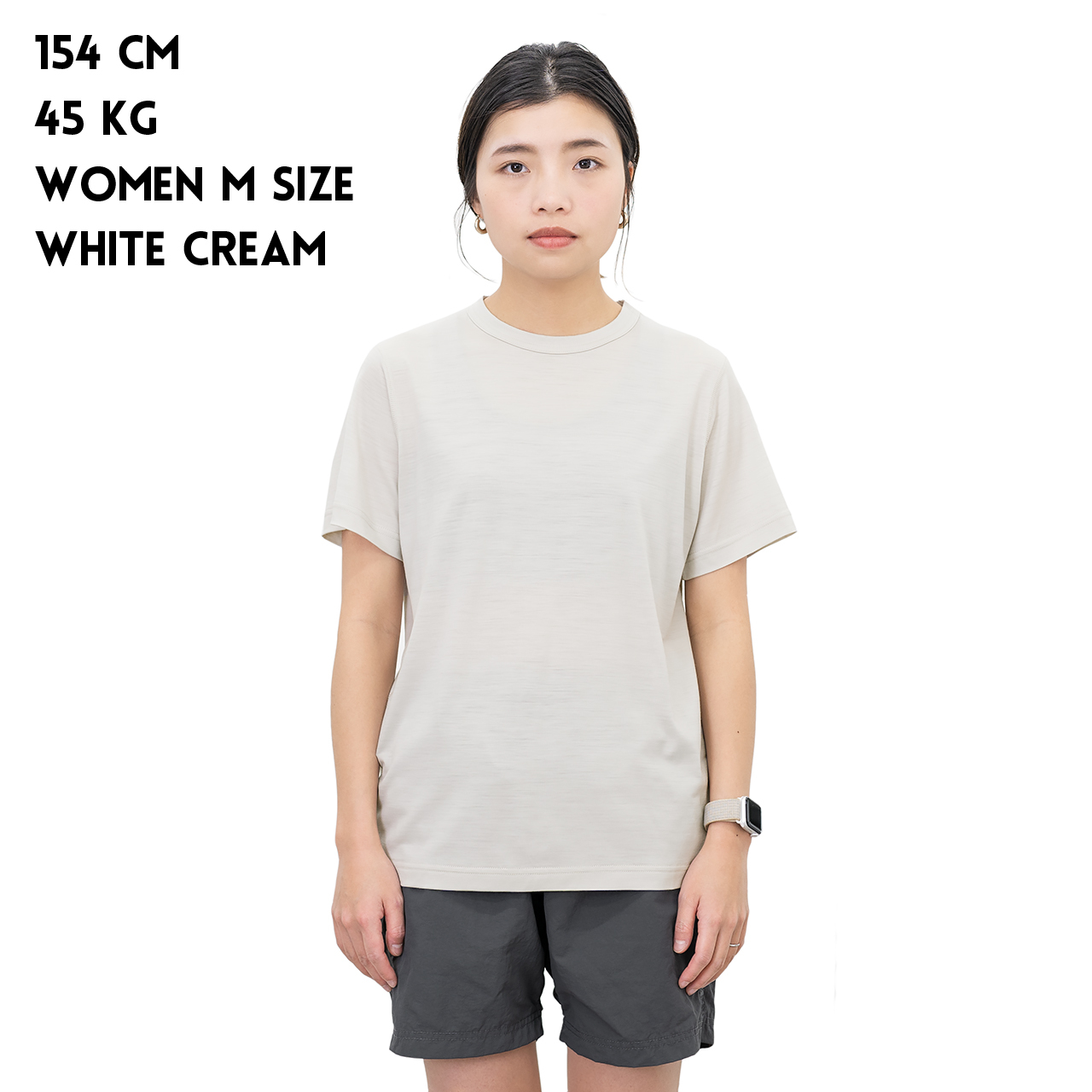

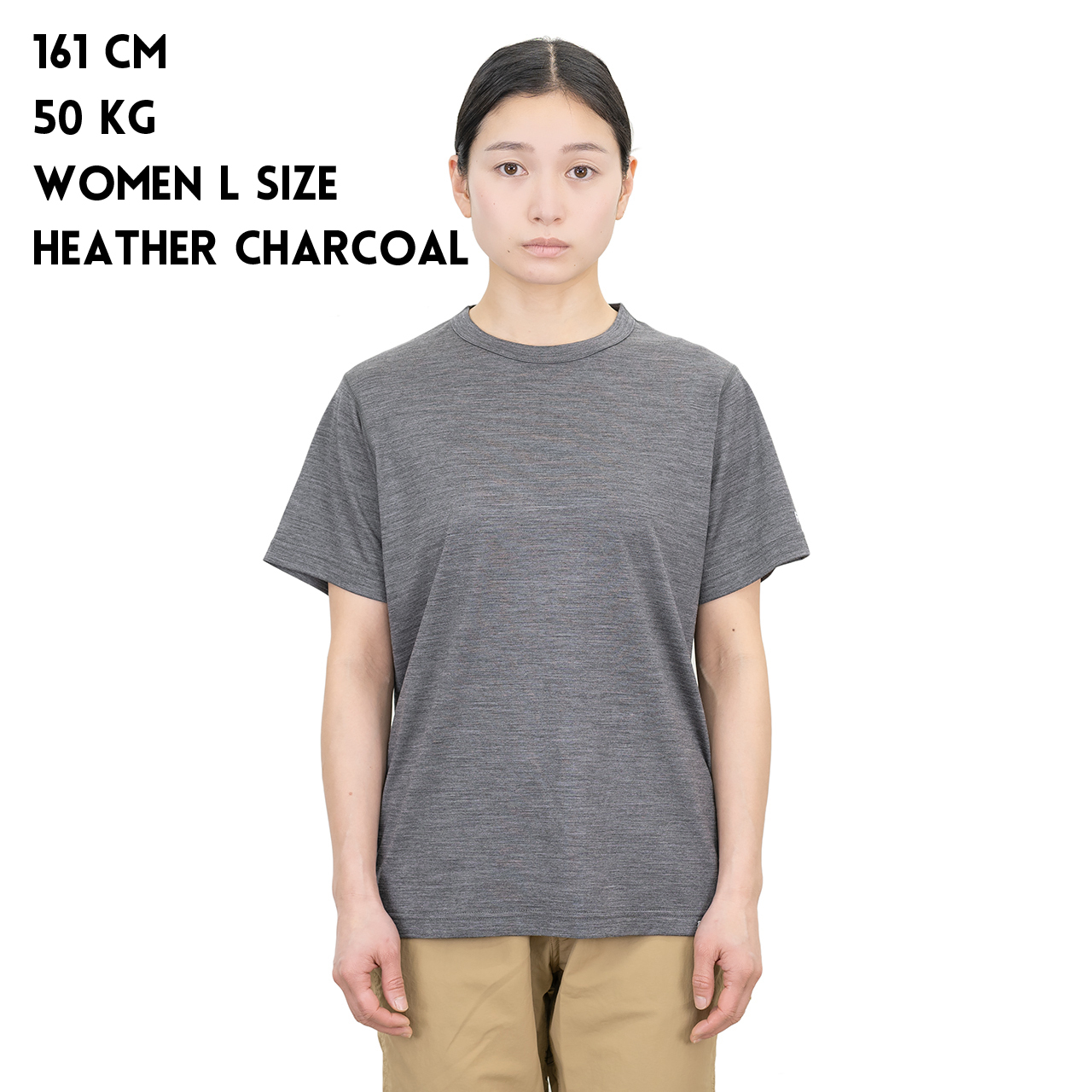
Collaborator
Collaborateur introduces you to the people who produce these products.

Tokyo PiO Aomori Factory Co., Ltd.
Tokyo PiO Aomori Factory is located in Tsugaru City, Aomori Prefecture.
I visited the factory in October. It was a very warm and calm day. The person in charge of the factory who was driving me there said, "It's a rare nice day."
On the way from Aomori Airport to the factory, the symbolic Mt. Iwaki of Aomori Prefecture was clearly visible. It seemed unusual. The apple orchards filled with bright red apples were also very symbolic, and we were given lots of large apples as souvenirs on the way home.



The Aomori Factory here mainly sews cut and sewn items, but also sews some other woven products.

However, they are still skilled at handling cut and sew items.
The above image shows the process before the fabric is cut. To make it easier to cut the long fabric, it is layered like millefeuille fabric.
This fabric was a very thin gauze jersey fabric. It stretched even with a little pull. I had to cut this difficult-to-handle fabric, lining it up as evenly as possible with the same tension. It gave me a headache just watching...



What was particularly impressive was the large number of special sewing machines installed for sewing cut-and-sew items.

The photo shows a "flat seam sewing machine" that can sew a special type of sewing called a flat seam. Simply put, it creates a flat finish without any rough seam allowances at the seams.
This sewing method is often used for underwear and baby wear because it is less stressful on the skin as there is no roughness in the seam allowance. However, this flat seam takes much longer than a regular lock stitch. It takes about two to three times longer. But I love this flat seam and it is the sewing method that RIDGE MOUNTAIN GEAR uses for cut material products.

The image above shows the actual product, "Merino Basic Tee Long Sleeve", being sewn.
The fabric is then joined from both sides and placed on the thin arm of the sewing machine to sew together. This fabric is particularly thin and flexible, so the customer said it was "very difficult to sew...". Even so, they took their time and sewed it carefully.
Not all cut and sew factories are capable of sewing this flat seam technique.
Many factories do not have these sewing machines, and it takes skill to actually operate them. I have also heard stories of "the craftsmen have left and now we can't operate the flat seamers."

Tokyo Pio Co., Ltd. was founded in 1971 in Sumida Ward as a small company with just two people, handling everything from sewing to delivery. After that, orders gradually increased, and from the Showa era to the Heisei era, the company manufactured many products for major apparel companies and department stores, but as times changed and cheaply made overseas products became more common, the company continues to research high quality, with pride in producing purely Japanese products, and with the accumulated technical skills and confidence.

Pio Aomori Factory, which is also the base of our domestic sewing factories, began operations in 1999 with the encouragement and invitation of Kizukuri Town in Aomori Prefecture, with the aim of revitalizing local industry and employment.

We analyze the brand image and the particular points of the products we handle, and determine the desired final product. We submit first samples, make adjustments, and produce with customer satisfaction in mind.

In addition, by stretching, cutting, sewing, and finishing in a way that matches the material selected by the customer, we can avoid putting strain on the fabric and ensure a beautiful finish. It may sound cliché, but we make our products with love for the fabric and the products. We pay close attention to even the parts that cannot be seen.

We hope to raise awareness of our factory as a 100% Japanese-made cut and sewn manufacturer, and to spread the word about the quality of Japanese-made products to each apparel brand. When it comes to cut and sewn factories in Tohoku, there is the PIO Group (Kadota Factory, Aomori Factory), and we would like to continue to work hard and improve every day.
Tokyo Pio Co., Ltd. Aomori Factory 〒038-3164
1-12 Yayoita, Shibata, Tsugaru City, Aomori Prefecture
https://www.tokyopio.co.jp/index.html
Attention
If you take note of the following points when caring for this product, you can use it for a long time.
・When washing, use detergent for wool.
・Turn the product inside out, place it in a laundry net and wash it alone.
- Water temperature should be limited to 40°C. Avoid washing with hot water.
- Avoid strong water flows when washing, and wash by hand or, if using a washing machine, use the "dry cycle" or "gentle water cycle".
- Never tumble dry.
・After dehydration, we recommend shaping the product and drying it in the shade.
-If you will not be wearing the item for a long period of time, make sure to remove any dirt and store it with an insect repellent.
[About stock]
Since we share inventory between our stores and our online store, it may happen that an item is out of stock after you place your order. In that case, we will contact you as soon as possible. Thank you for your understanding.